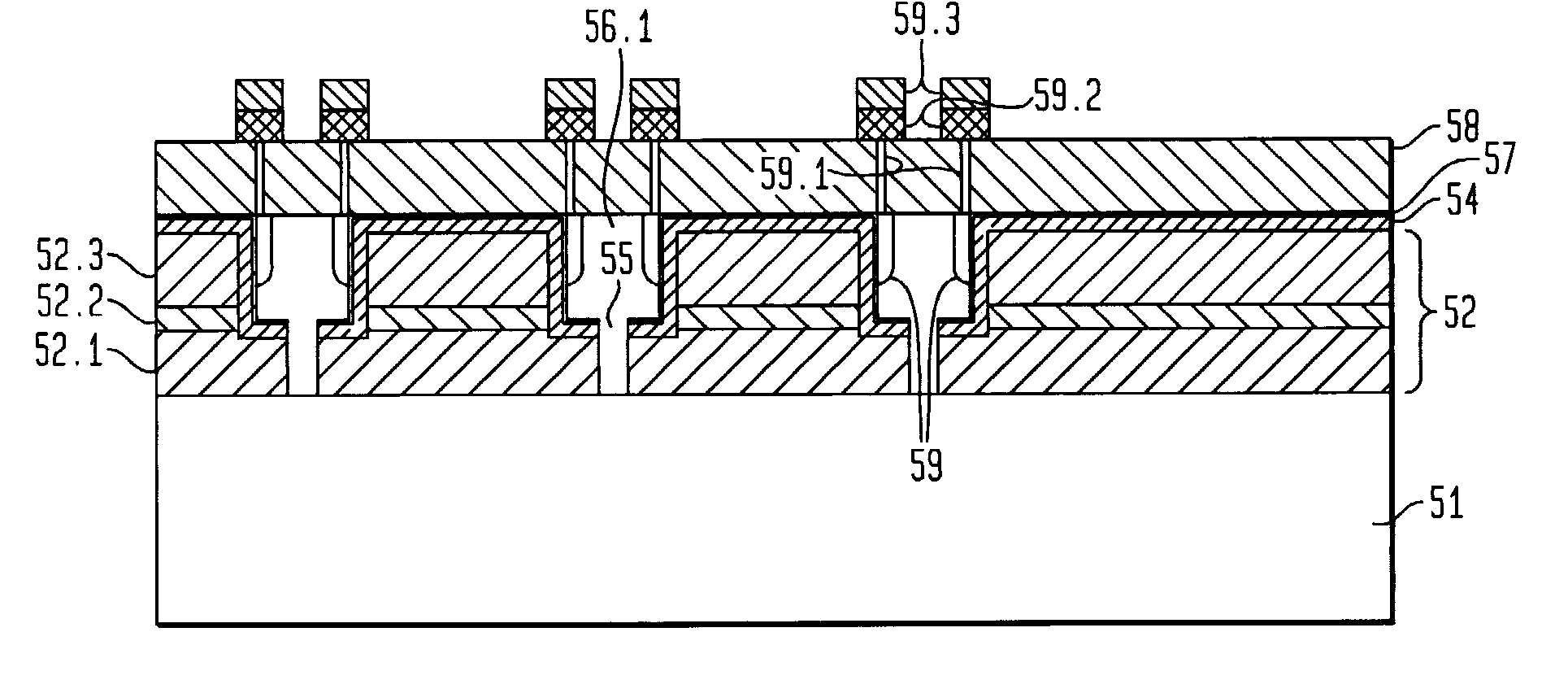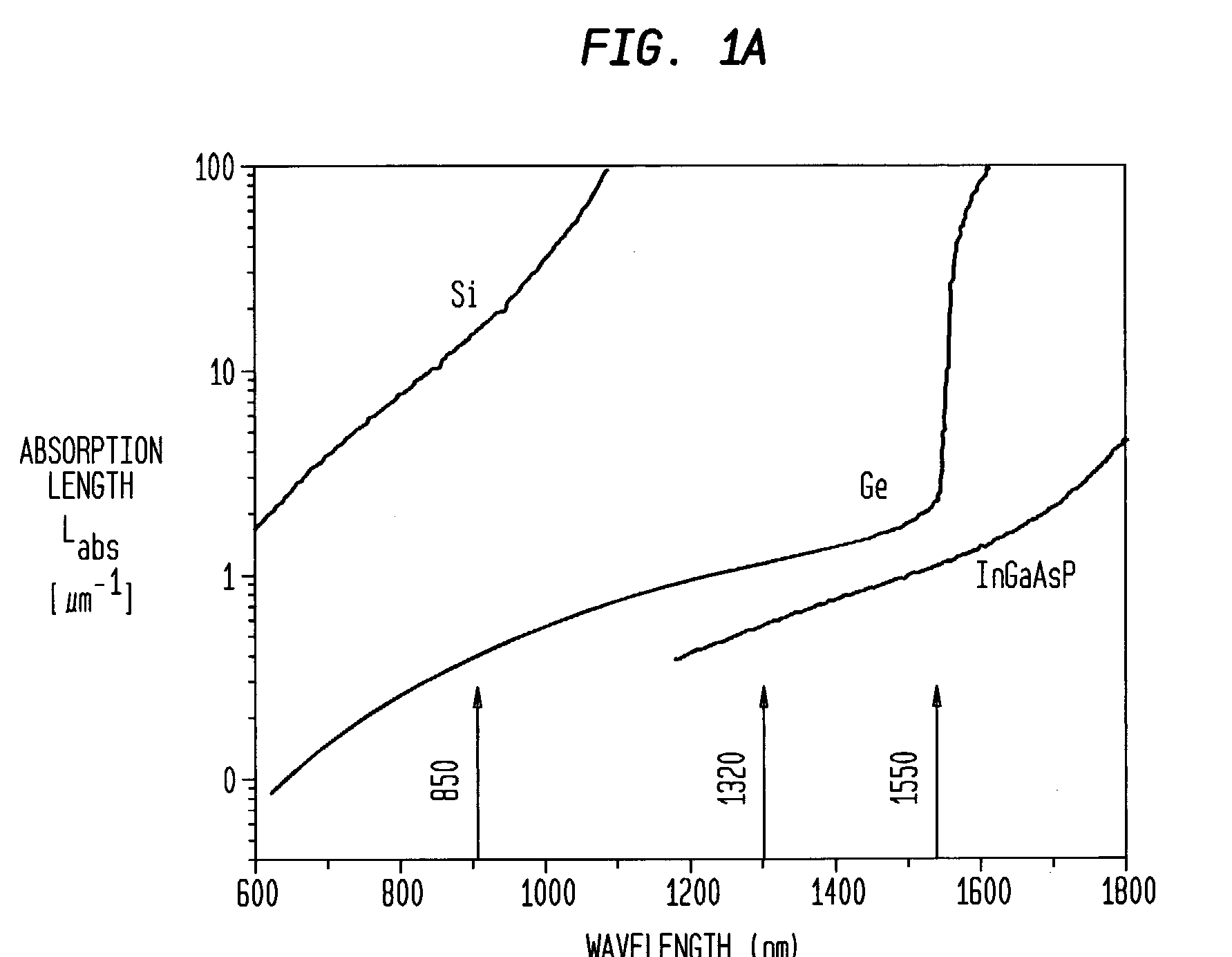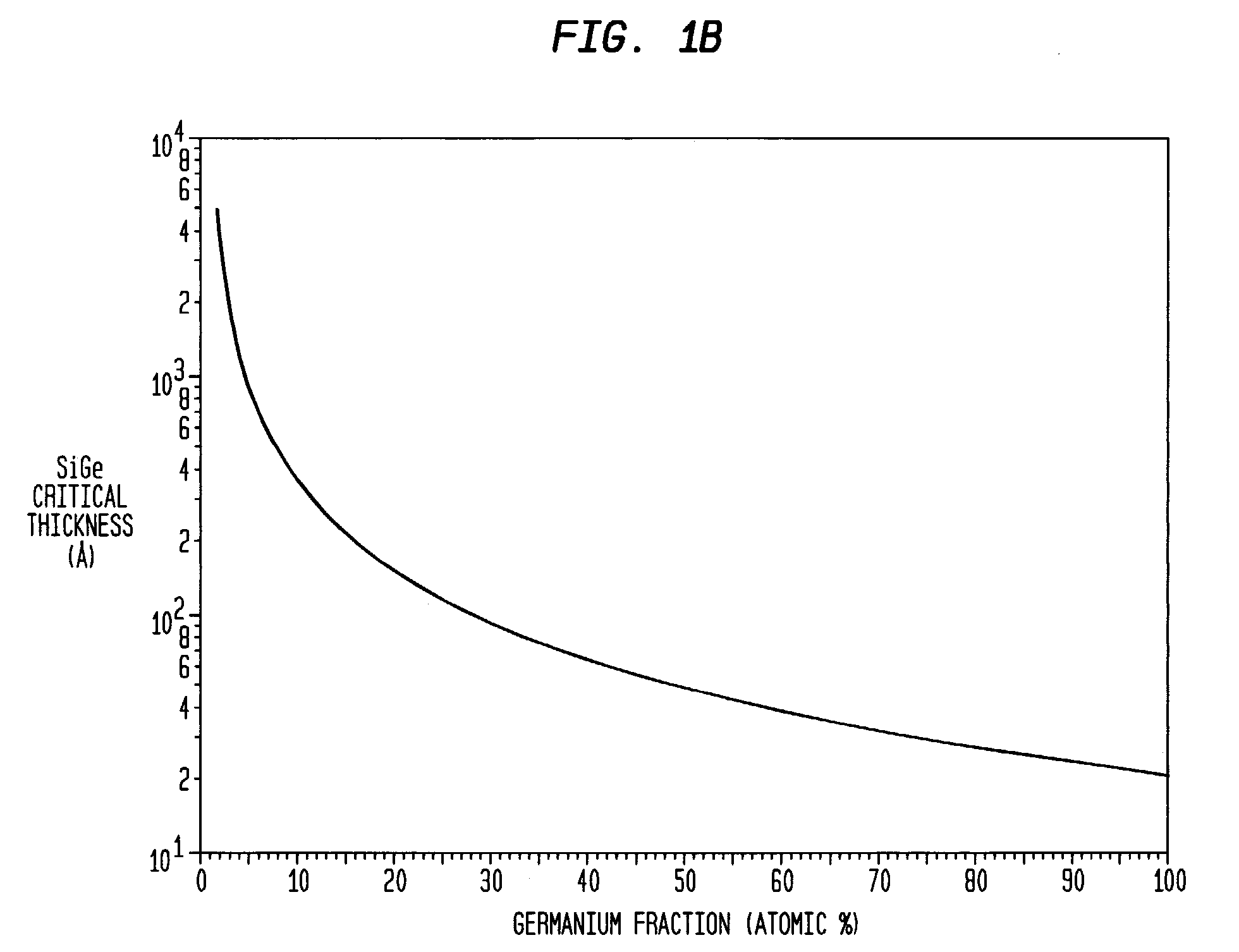Semiconductor devices with reduced active region defects and unique contacting schemes
a technology of active region defects and semiconductor devices, applied in semiconductor devices, radiation controlled devices, electrical apparatus, etc., can solve the problems of low yield and high cost of v-based processing, poor absorption of si, and low cost of -based processing, so as to reduce the effect of dark curren
- Summary
- Abstract
- Description
- Claims
- Application Information
AI Technical Summary
Benefits of technology
Problems solved by technology
Method used
Image
Examples
Embodiment Construction
Fabrication Process
[0057]Before discussing in detail various device designs that can be realized using novel processes in accordance with one aspect of our invention, we first discuss the process as a general approach to fabricating relatively defect-free semiconductor active regions of devices such as PDs and MOSFETs. However, we concentrate in the exposition on the fabrication of low-defect-density absorption regions of SiGe PDs for operation at IR wavelengths of about 800–1600 nm for the purposes of illustration and as a reflection of one of the principal applications of our invention.
[0058]From our preceding discussion of prior art PDs, it is clear that we desire a device in which optical absorption occurs in high quality Ge, the majority of which is undoped or is depleted.
[0059]Our invention uses an epitaxial lateral overgrowth (ELO) technique to form high quality Ge embedded in an insulator structure that has been formed on top of a Si substrate. ELO has been used to monolithi...
PUM
 Login to View More
Login to View More Abstract
Description
Claims
Application Information
 Login to View More
Login to View More - R&D
- Intellectual Property
- Life Sciences
- Materials
- Tech Scout
- Unparalleled Data Quality
- Higher Quality Content
- 60% Fewer Hallucinations
Browse by: Latest US Patents, China's latest patents, Technical Efficacy Thesaurus, Application Domain, Technology Topic, Popular Technical Reports.
© 2025 PatSnap. All rights reserved.Legal|Privacy policy|Modern Slavery Act Transparency Statement|Sitemap|About US| Contact US: help@patsnap.com



